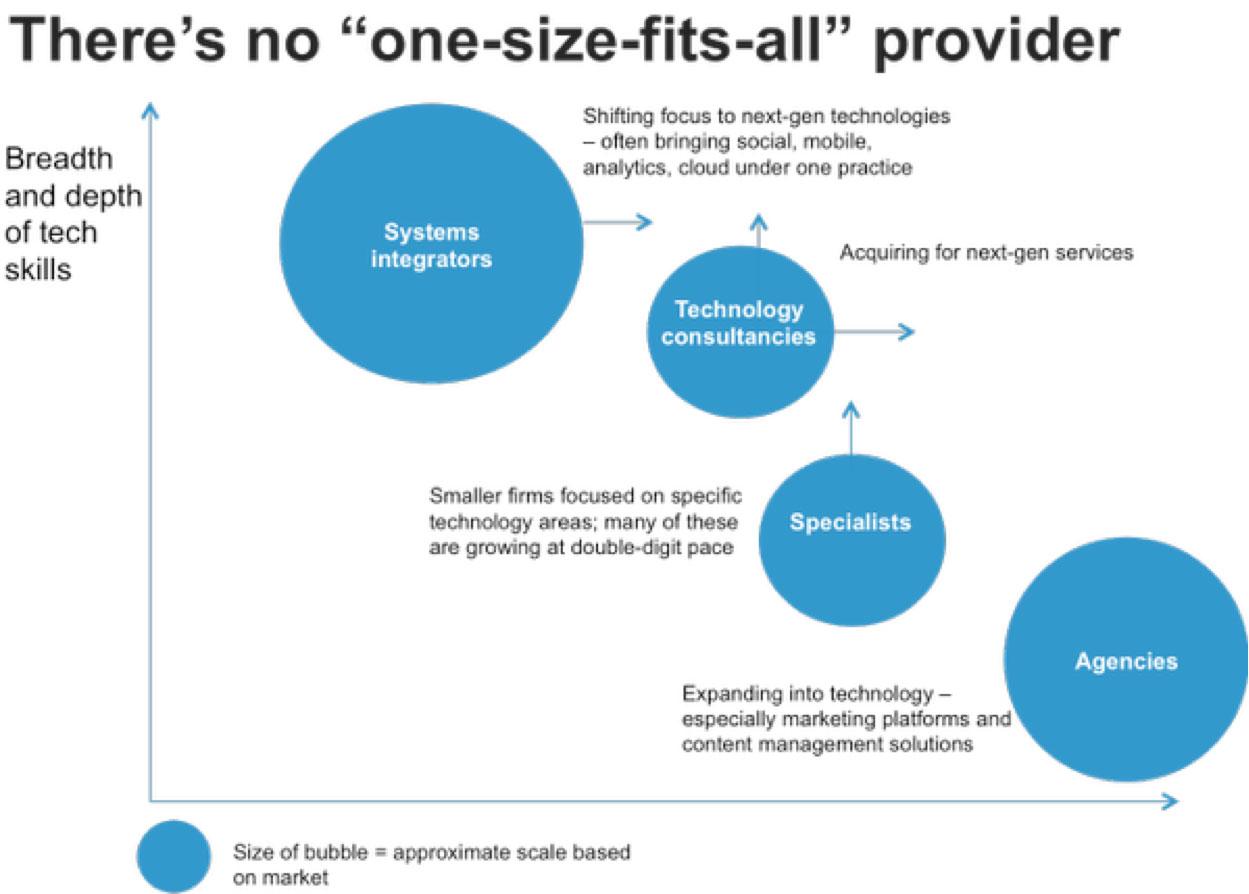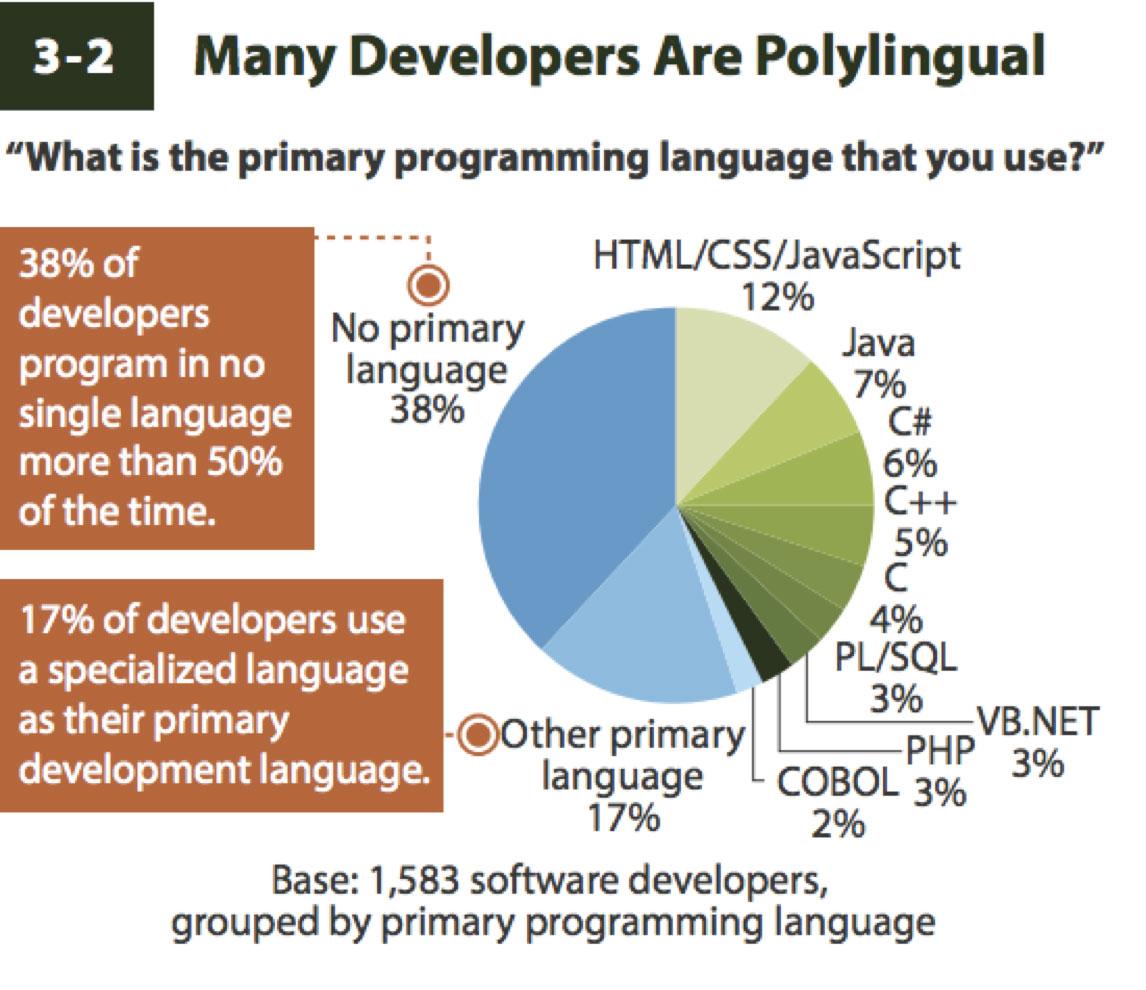
Innovation Ahead: How Custom Software Development is Changing
Business leaders are feeling under fire. As competition heats up, they must create stand-out digital experiences and engage customers across digital channels .
But creating the software that brings these digital experiences to life is easier said than done. So what’s the answer?
To find out, we commissioned Forrester Consulting to survey over 200 business and IT professionals on how companies are designing, building, and maintaining customer-facing systems of engagement. The resulting study, “Drive Innovation with the Right Skills: The Value of Custom Software Development," takes an in-depth look on how the software development landscape is changing, what’s ahead, and what companies can do to adapt.
To delve further into the findings, we hosted a Tweet Jam with Forrester Research analyst Jeffrey Hammond. The following is an edited transcript of our conversation.
Thoughtworks (TW): Welcome to the #MasterTheMix tweet jam hosted by @Thoughtworks, featuring @jhammond of Forrester Research. We're talking software development.
Jeffrey Hammond (JH): Thanks, I'm happy to be here.
TW: Customers' digital habits keep shifting. How is this affecting customer software development?
JH: We see a number of shifts:
- The move to mobile is dramatically affecting developer skills and velocity.
- The move to scale out and public cloud infrastructure affects architects and required infrastructure skills.
- Open source and public cloud infrastructure are affecting IT control points.
As a result, most IT shops are struggling to adjust their sourcing and internal development strategies. IT is having a hard time getting fast, small, and responsive, especially when many companies have outsourced their development. Now, we see business leaders taking control of development decision making, especially on the front-end.
TW: How are mobile and cloud impacting how firms select and work with third-party providers?
JH: We see business units and leaders taking budgetary control and making more app sourcing decisions. For example, in our recent survey, we saw 38% say that chief digital officers are key influencers. And my peers Julie Ask and Ted Schadler are seeing many marketing pros take the lead on mobile projects.
Business leaders are looking to firms that are closer to them, smaller, more responsive and talented.
Here's how Liz Herbert views the ongoing consolidation (and I agree):

TW: The Forrester study states that the biggest challenge is finding the right combination of talent. Which skill is hardest to find?
JH: In the survey we ran, it was development experience with modern web frameworks (think Angular, Ionic). But we also hear things like design skills, and knowledge of Agile and continuous delivery tools and techniques.
Companies expect poly-skilled developers. They’re also looking for design, process discipline, business acumen, etc. Devs that understand how to use analytics tools are also another key area.
And clients tapping cloud infrastructure have a hard time finding devs that know how to build with scale out principles.
TW: How are shifts in process and programming languages affecting the skill mix on teams?
JH: Fun topic. We see a shift toward javascript for sure, and also toward ObjectiveC.
This data is from last year, but we're refreshing the survey as we speak.

Many devs are polylingual, especially front end devs, but the promise of a full JavaScript stack is appealing due to complexity. But the problem with "JS everywhere" right now is the framework churn we see—it makes it hard to place bets.
My teammate Michael Facemire is writing on the JS stack space and looking at these topics.
As for other languages, we see anecdotal growth in Go and interest in Typescript, Haskell and others. But that interest is not yet showing up in our quantitative surveys, and certainly not at the level of JS or PHP.
TW: Why are majority of companies not satisfied with the performance of third-party providers?
JH: In many cases they aren't using the right screening criteria. Looking at lowest hourly dev rates is a path to disaster.
Dissatisfaction ranges from product release frequency, level of autonomy, development process used. Firms also cite responsiveness as a problem, that can be exacerbated by time zone differences. If you are running 1 or 2 week sprints, every hour matters.
Companies also can't find the right mix of technical dev skills as noted earlier.
Turnover is also an issue. Devs can't be faceless "resources" when the skill churn is high and customer engagement matters.
TW: Companies will pay more for capable partners. What’s working? What defines capable?

JH: Firms will pay for modern web skills (Angular, Ionic, Express), and native mobile chops (design, Objective C, mobile analytics). Experience in high velocity delivery, and continuous delivery practices. Devs with design chops or designers that can write code are a hot commodity as well.
In the survey, we also saw that firm would pay for autonomy: the ability to make correct calls.
TW: Is any industry particularly disruptive and doing custom software development right?
JH: I'd say media, entertainment and leisure, and also online retail. But it's really individual companies as opposed to whole industries. Disruptors I watch include Amazon, Starwood Properties Group, Domino’s Australia, Netflix, USAA, and Farm Credit.
TW: Are the Request For Proposal (RFP) and 100 page requirement documents dead? How does contracting change?
JH: A lengthy RFP presumes you know exactly what you want. I’m not sure how that works when the front end is changing so rapidly. I think folks should use something like Cynefin first.
An RFP can work in the obvious and complicated domains, but not the complex and chaotic ones, and most of what we see on the front end today is either complex or chaotic.
That's also why continuous deployment principles are so important—forget the specs and get into a feedback loop ASAP!
That's one of the big issues with traditional SIs—the devs haven't internalized lean startup principles.
TW: What books, blogs or thought leaders do you follow that are great sources of information for software development?
JH: Well, I have to tip my hat to Martin Fowler. I’m also fond of Coding Horror. And I gotta say I do read Matt Asay.
Some others: Continuous Delivery, Netflix' Tech Blog, High Scalability, and the Twitter Engineering Blog. And this is a nice article from McKinsey.
TW: Thank you for the knowledge sharing today, Jeffrey.
Want to find out more? Get your own copy of the Master the Mix Study.
This transcript has been edited for clarity and grammar.
Disclaimer: The statements and opinions expressed in this article are those of the author(s) and do not necessarily reflect the positions of Thoughtworks.














